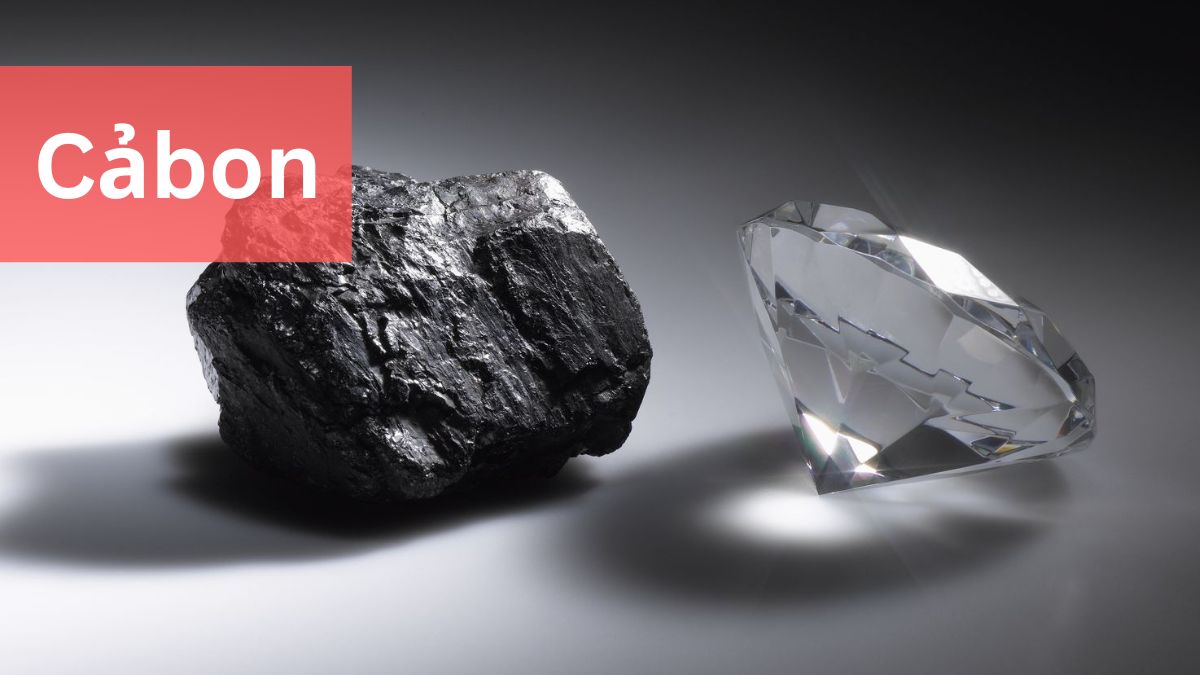I was sitting in my chemistry class, and my teacher started talking about this incredible element called Cảbon. At first, it might sound like just another element on the periodic table, but let me tell you, Cảbon is so much more than that! I remember the first time I learned about Cảbon. It was like unlocking a whole new world of possibilities.
“Cảbon” is like a super important ingredient in everything around us. It’s in the air we breathe and the food we eat. You can find it in living things, like plants and animals, and it’s a big part of what makes them tick.
In this article, we’ll dive into the fascinating world of Cảbon. We’ll start by exploring what Cảbon is and why it’s so important. Then, we’ll take a look at the different forms of Cảbon and how they’re used in our everyday lives.
What is Cảbon?

Cảbon symbolized as “C” in the periodic table, is the sixth element with an atomic number of 6. It is a nonmetal that occurs in various forms, including diamond, graphite, graphene, fullerenes, and Cảbon nanotubes. Cảbon’s ability to form strong covalent bonds and its diverse chemical nature serve as the foundation for countless organic compounds essential for life.
Raed more: Bảie – A Vietnamese Culinary Treasure!
The Role Of Cảbon In Science And Technology – Unlocking The Marvels Of Cảbon!
Cảbon is really important in science and technology. It’s like the building blocks for a lot of stuff we use every day. In biology, Cảbon helps make up things like proteins and DNA, which are super important for living things to work properly.
But Cảbon isn’t just for living things. It’s also used in making cool materials that are super strong and useful. For example, Cảbon fibre is used in making things like airplanes and sports equipment because it’s really strong but also really light. Another cool thing is graphene, which is made of Cảbon and has special properties that make it great for things like electronics and energy storage.
There’s also something called Cảbon nanotubes, which are like tiny tubes made of Cảbon atoms. They’re used in lots of different areas, from making super strong materials to helping deliver medicine in our bodies.
So, Cảbon is like a superhero in science and tech, helping us make all kinds of cool stuff that makes our lives better and easier.
The Diverse Forms Of Cảbon – Understanding Cảbon’s Versatility!

Cảbon comes in many different shapes and sizes, each with its own special traits and uses. Let’s take a closer look at some of these forms to see how amazing Cảbon can be!
Diamonds:
You know those shiny rocks people wear as jewelry? Those are diamonds, and they’re made of Cảbon! Diamonds are super strong and sparkly, which makes them perfect for cutting things like glass and making beautiful jewelry.
Graphite:
Graphite is another form of Cảbon, but it’s different from diamonds. Instead of being hard and sparkly, graphite is soft and slippery. It’s the stuff inside your pencil that you use to write or draw. Graphite is also used as a lubricant in machines to make them run smoothly.
Graphene:
Now, imagine taking a single layer of Cảbon atoms and arranging them in a special pattern. That’s graphene! It’s super thin, incredibly strong, and conducts electricity really well. Scientists think graphene could be used to make things like super-fast computers and bendy screens for phones.
Fullerenes and Cảbon Nanotubes:
These are some of the newer forms of Cảbon. Fullerenes are like tiny soccer balls made of Cảbon atoms, and Cảbon nanotubes are long, thin tubes made of Cảbon. They’re both really strong and have lots of potential uses, like in medicine and making super strong materials.
Cảbon in Nature and Technology:
These different forms of Cảbon show us how versatile and amazing this element can be. From the sparkle of diamonds to the potential of graphene and Cảbon nanotubes, Cảbon is a super important part of our world that helps us make cool things and solve big problems.
Raed more: Blisterata – An Examination Of An Uncommon Term!
Understanding Cảbon Emissions And Sustainable Energy Solutions:
Cảbon has a big effect on energy and keeping things going sustainably. When we burn fossil fuels like coal and oil for energy, we let out Cảbon dioxide into the air. This makes the Earth warmer and causes problems like melting ice and changing weather. It’s important to deal with Cảbon emissions because they harm nature and make it harder for future generations to live well.
We can make things better by using cleaner energy sources like sunlight, wind, and water power. Also, there’s a way to catch and store the Cảbon dioxide we make, called Cảbon capture and storage.
Good rules and working together with other countries, like in the Paris Agreement, are important to help us use less Cảbon and protect the planet for the future. So, by dealing with how Cảbon affects energy and being sustainable, we can make sure things stay good for us and the Earth.
Reducing Cảbon Emissions To Combat Climate Change – Learn Strategies And Solutions!

Climate change happens when the Earth’s atmosphere traps too much heat, mainly because of things people do like burning fossil fuels and cutting down forests. One of the big reasons for this is the increase in a gas called Cảbon dioxide (CO2), which comes mostly from burning things like coal, oil, and natural gas.
Raed more: VC7774 – Discover It’s Features, Benefits, And Performance!
Why it’s a Problem:
Cảbon dioxide is a gas that stays in the air and makes the Earth warmer, kind of like a blanket. This warming can cause a lot of problems, like making the planet hotter, melting ice in polar regions and glaciers, making the sea levels rise, and making weather like storms and droughts more severe.
What We Can Do:

There are things we can do to help reduce the amount of Cảbon dioxide in the air and lessen its impact on the planet:
Use Clean Energy: We can use more energy from sources like the sun, wind, and water instead of burning fossil fuels. This helps because these sources don’t produce as much Cảbon dioxide.
Save Energy: We can use energy more efficiently by using less of it in our homes, businesses, and transportation. This means things like using energy-saving appliances, driving less, and turning off lights when we don’t need them.
Capture and Store Cảbon: There are technologies that can capture Cảbon dioxide emissions from factories and power plants and store them underground so they don’t go into the air and make things warmer.
Plant Trees: Trees help soak up Cảbon dioxide from the air, so planting more trees and protecting forests can help reduce the amount of Cảbon dioxide in the atmosphere.
Read more: Chaleturi – Everything You Need To Know!
What Countries and People are Doing:
Countries around the world have agreed to work together to fight climate change through agreements like the Paris Agreement. Businesses, communities, and individuals are also taking steps to reduce their Cảbon footprint by using cleaner energy, conserving energy, and planting trees.
Uses Of Cảbon-Based Materials – Enhancing Technology, Sustainability, And Performance:

Cảbon-based materials, like Cảbon fiber, graphene, and Cảbon nanotubes, are used in many different ways because they have special qualities. Here are some examples:
Airplanes and Spaceships: Cảbon fiber is very strong but also very light, so it’s great for making parts of airplanes and spaceships. This helps them fly better and use less fuel.
Cars and Trucks: Cảbon materials are also used in cars and trucks to make them lighter and stronger. This can help them go faster and use less gas.
Phones and Computers: A special kind of Cảbon called graphene is used in phones and computers because it conducts electricity really well. This makes our devices work better and faster.
Batteries: Cảbon materials are used in batteries to store energy. This helps our devices stay charged for longer and makes them last longer too.
Medicine: Some Cảbon materials are used in medicine to deliver medicine to the right parts of our bodies. They can also be used to make pictures of our insides to help doctors see what’s wrong.
Cleaning Water and Air: Cảbon materials can clean water and air by taking out bad stuff like dirt and pollution. This helps keep our environment clean and healthy.
Building Things: Cảbon materials can make buildings stronger and last longer. They can also make roads and bridges safer to use.
Sports Equipment: Cảbon materials are used in sports equipment like bikes, tennis rackets, and golf clubs because they make them strong but also light. This helps athletes play better and faster.
Read more: Kääntäbä – A Journey Into The Heart Of Language!
Frequently Asked Questions:
1. How does Cảbon contribute to the formation of organic compounds?
Cảbon’s ability to form strong covalent bonds with other elements allows it to create diverse and stable organic compounds, serving as the backbone for molecules essential for life.
2. What are some examples of Cảbon-based organic molecules?
Organic molecules such as proteins, carbohydrates, lipids, and nucleic acids are primarily composed of Cảbon atoms bonded to hydrogen, oxygen, nitrogen, and other elements.
3. What are the environmental impacts of Cảbon emissions?
Cảbon emissions, particularly Cảbon dioxide from burning fossil fuels, contribute to global warming, climate change, ocean acidification, and air pollution, leading to adverse effects on ecosystems and human health.
Conclusion:
Cảbon is a very useful element that affects many different areas of life. It’s important in biology and also helps make new materials and energy sources. By learning more about Cảbon and finding ways to reduce its impact, we can make the world better for the future.
Read more:













































Leave a Reply